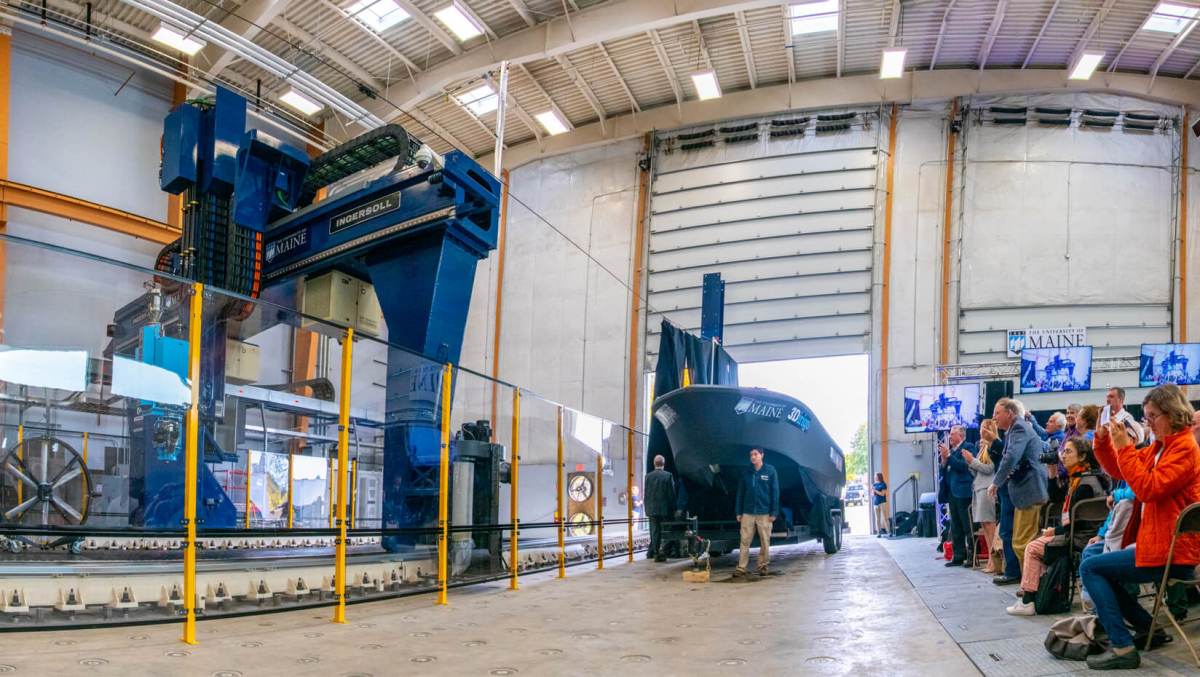When you think of 3D printing, it’s likely in terms of its ability to print human-scale objects: cups, candleholders and other handheld objects. The higher-end applications of this technology have also been used for medical procedures; even so, they’re being used to create things that go into the human body, as opposed to things that are the size of a human body — if not larger.
A new article at The Economist suggests that might all be about to change, though. To what extent, you might ask? Well, it opens with a 3D printer being used to make a 25-foot boat.
The article notes that previous attempts at large-scale 3D printing have been plagued with inaccuracies. A new printer at the University of Maine, where the boat was created, puts a new spin on the technology to avoid this issue.
“The University of Maine’s printer overcomes the problem of scale by suspending the printer’s business end — the nozzle that extrudes the ink — from a gantry,” The Economist reports. “The ink is molten thermoplastic resin containing carbon fibres.”
It’s a process that’s also earned the university a trio of Guinness World Records. And it’s also being used in an innovative way as it relates to natural fibers — an intriguing blend of old and new technologies.
The Economist reports that the aforementioned boat isn’t the only instance of large-scale 3D printing making its impact felt. Also mentioned are architectural uses for 3D printers in Brooklyn and Beijing, and how the process might end up being used for spacecraft. “The sky’s the limit” is often used in situations like this, but in this instance it happens to be entirely accurate.
Subscribe here for our free daily newsletter.
Thanks for reading InsideHook. Sign up for our daily newsletter and be in the know.


















